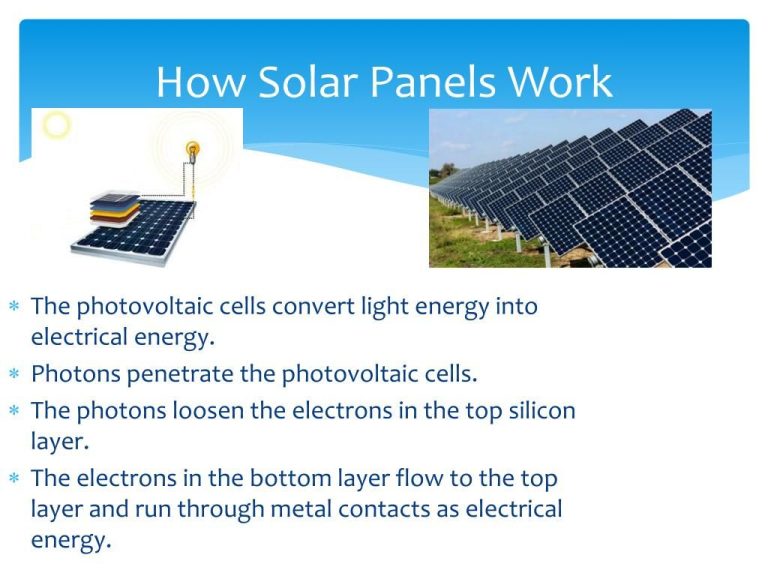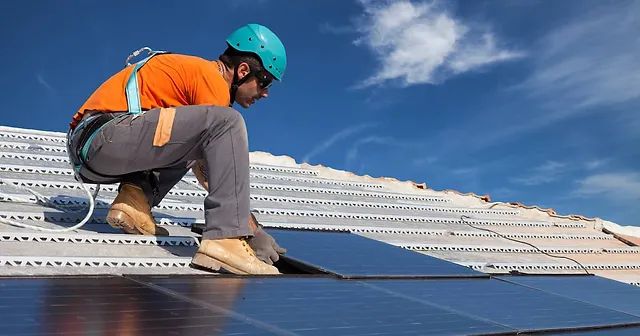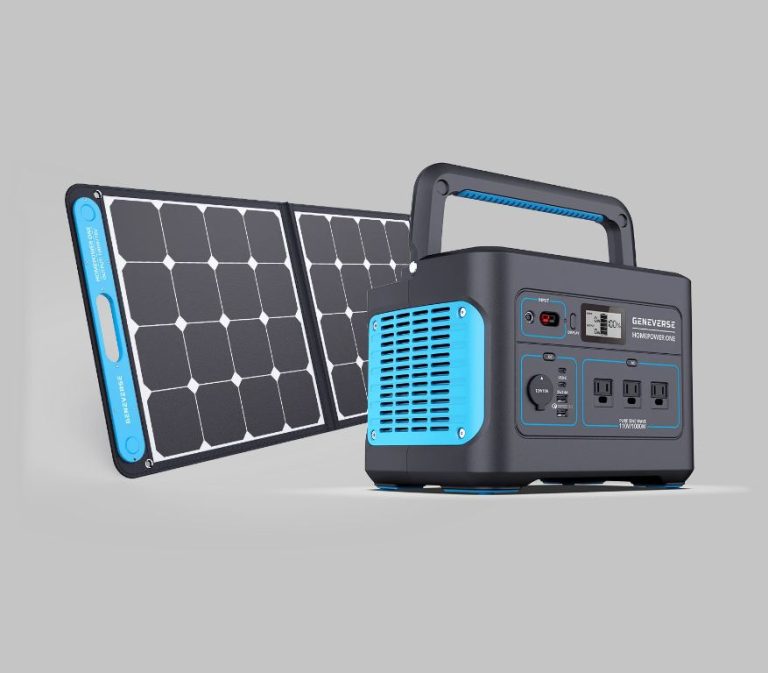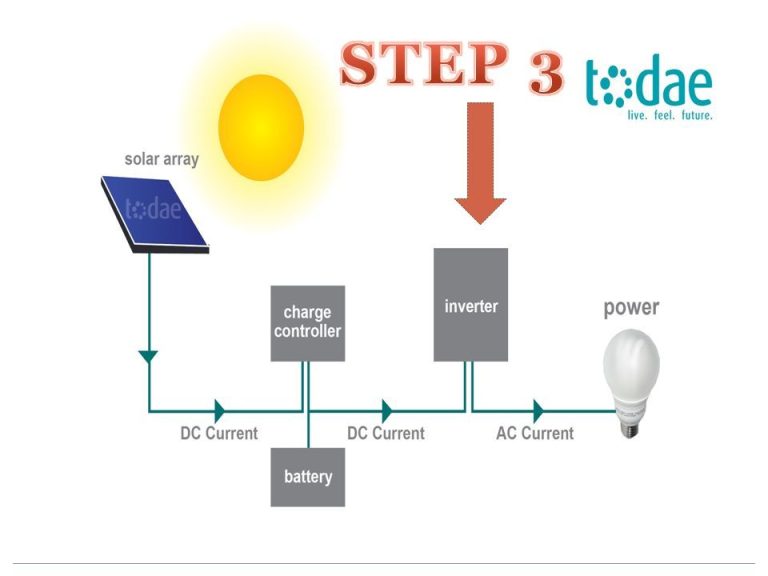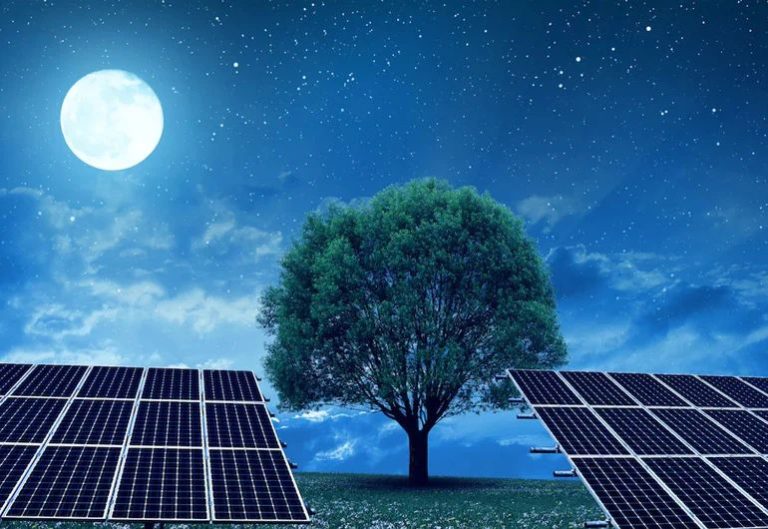Is Las Vegas 100% Solar?
Las Vegas has ambitious goals to reach 100% renewable energy in the coming years. In 2021, a bill was passed by the Nevada State Legislature requiring the state to transition to 50% renewable energy by 2030. Some casinos and resorts on the famous Las Vegas Strip have set even more aggressive targets, with some aiming for 100% renewable operations within the next few years.
The city’s push towards renewable energy, especially solar, is being driven by decreasing costs, demand from big businesses, and a desire to combat climate change. Las Vegas has abundant sunlight and open land that make it an ideal location for large-scale solar installations.
While the city is making major strides, it still has a ways to go before the entire metro area and famous Strip are powered completely by renewable sources like solar. Exactly how close Las Vegas is to reaching 100% solar power remains to be seen.
Current Solar Power in Las Vegas
According to a 2022 study by Environment America Research & Policy Center, Las Vegas currently gets around 690 watts of solar power capacity per person, making it the second highest city for solar power capita in the United States [1]. This amounts to approximately 443 megawatts of total solar capacity within the city.
While Las Vegas has made big strides with solar power, it still only accounts for a fraction of the city’s total energy consumption. According to the U.S. Energy Information Administration, in 2022 renewable energy including solar, geothermal and hydroelectric power made up about 37% of Nevada’s total in-state electricity generation [2]. The majority of Las Vegas’ power still comes from non-renewable sources like natural gas and coal.
So while Las Vegas utilizes solar power extensively compared to other major U.S. cities, it is still a long way from getting 100% of its energy from solar and other renewable sources.
History of Solar in Las Vegas
Las Vegas has been investing in solar power since the early 2000s, but major investments ramped up in the late 2000s and early 2010s. In 2008, the city entered into a 20-year power purchase agreement with Sempra Generation to develop a 10 megawatt solar facility, which was the largest municipal solar facility in the United States at the time. This was just the beginning of Las Vegas’ solar expansion. A Brief History of Solar Power in Las Vegas – Sun Source Energy
In 2013, Las Vegas announced plans to meet 20% of its power demand from renewable sources by 2020. The city continued signing deals for large solar facilities, including a 100 megawatt facility in 2014. According to the Solar Energy Industries Association, Las Vegas ranked 3rd in the nation for installed solar capacity in 2016.
Major Solar Projects
Las Vegas gets much of its solar power from large utility-scale solar farms located in the southern Nevada desert. Some of the major projects include:
Copper Mountain Solar Facility – This is one of the largest solar farms in the world, located about 40 miles southwest of Las Vegas in Boulder City. It has a capacity of 552 MW generated by around 1 million solar panels across 2,000 acres. The plant produces enough power for around 100,000 homes.
Moapa Southern Paiute Solar Project – Located on the Moapa River Indian Reservation about 30 miles north of Las Vegas. The 250 MW project was completed in 2017 and provides power to around 111,000 homes.
Techren Solar Project – A 100 MW solar farm located in Boulder City that was completed in 2016. It features 328,000 solar panels and generates enough electricity for 27,000 homes.
Eagle Shadow Mountain Solar Farm – Located north of Las Vegas, this 300 MW project was completed in 2014. It was the largest solar photovoltaic power plant in the world when constructed.
Challenges
While Las Vegas has made significant progress towards using renewable solar energy, there are still difficulties and barriers to reaching 100% solar power. One major challenge is the variability of solar power generation. Solar only generates energy when the sun is shining, so energy storage and backup power sources are needed for times when sunlight is limited, like nights and cloudy days. According to a report by Environment America, Nevada’s hot climate makes solar power generation peak at times that don’t align with peak energy demand [1]. This creates complications for reliance on solar alone.
The large upfront costs of building enough solar capacity to power the entire city are also prohibitive. Significant infrastructure upgrades would be required to go completely solar. While costs continue to fall, solar is still more expensive than conventional energy sources like natural gas. Policies and incentives would be needed to motivate large scale adoption of rooftop and utility-scale solar projects to reach the 100% goal.
Furthermore, Nevada’s policies and regulations have created challenges for solar in the past, like when net metering rates were reduced in 2015. While solar has rebounded since then, changes to state-level policies could impact the economics of future solar projects. Ongoing regulatory support will be important for solar to remain viable and continue growing as a percentage of Las Vegas’s energy supply.
Benefits of Increasing Solar Power in Las Vegas
There are numerous benefits of Las Vegas moving to more and more solar power. According to https://enlytenenergy.com/7-benefits-to-going-solar-in-las-vegas/, one of the biggest benefits for residents is cost savings on their monthly electricity bills. Most Nevada households pay around $111 per month on electricity, but installing solar panels can reduce that amount significantly. The NV Energy website also states that private rooftop solar systems can lower monthly energy costs through net metering programs.
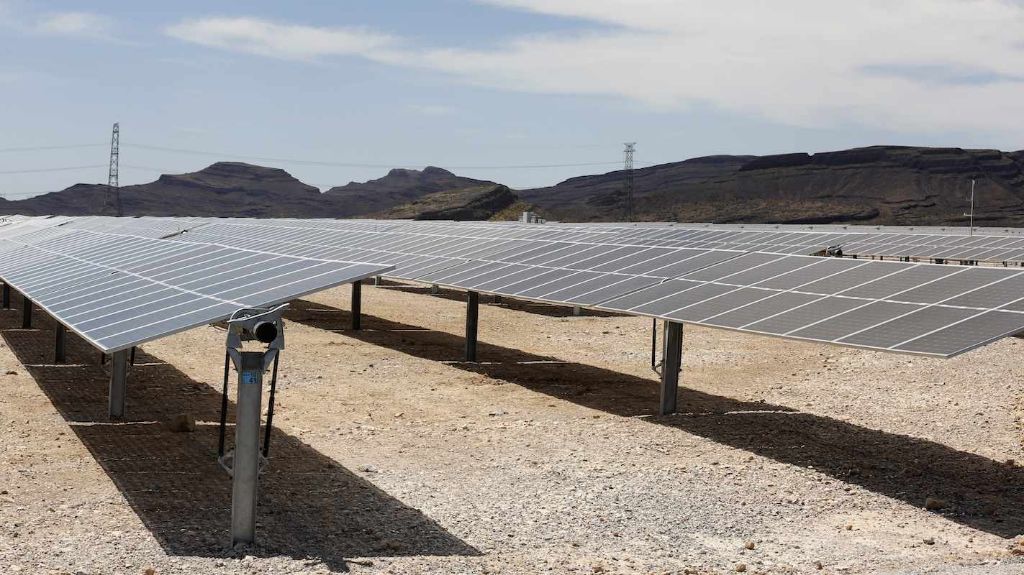
Increasing solar power also reduces Las Vegas’ carbon footprint and reliance on fossil fuels. Solar energy is a clean, renewable source that does not emit greenhouse gases. As a city in the hot and sunny Southwest, Las Vegas has ideal conditions to harness the power of the sun. Ramping up solar would support environmental goals and mitigate some of the impacts of climate change.
There are also economic benefits to going solar. The solar industry creates good-paying local jobs for manufacturing, installing, and maintaining solar panels. Expanding solar power attracts companies focused on renewable energy to Las Vegas. It also helps make the city more self-sufficient in its energy production. With ample open land, Las Vegas has great solar energy potential.
Future Outlook
Las Vegas has set ambitious goals for increasing solar power in the coming years. According to the Las Vegas Weekly, the city aims to reach 50% renewable energy by 2030 as part of Nevada’s renewable energy goals.
Major solar projects in the pipeline will help Las Vegas make progress towards these renewable energy targets. As reported by the Nevada Current, the federal government recently advanced approval of four large solar projects in Nevada, which combined could generate enough renewable energy to power nearly 400,000 homes.
Additionally, the city has set a goal of achieving 100% carbon-free energy by 2050, as noted by Solar Optimum. This demonstrates Las Vegas’ long-term commitment to sustainable energy sources like solar.
Reaching these goals will require major investments in solar energy infrastructure, overcoming challenges like availability of land and transmission capacity, and likely the development of battery storage technology to support an increasing percentage of intermittent renewable sources like solar power.
How Close to 100%
While Las Vegas has made significant progress in adopting renewable solar energy, the city is not yet 100% solar powered. According to the Sierra Club, about 34% of the electricity used in southern Nevada comes from solar power as of 2021. Major resorts on the Las Vegas Strip have installed large solar arrays and have goals to reach 100% renewable energy, but the city as a whole is not there yet.
One of the largest solar projects providing power to Las Vegas is the Boulder Solar 1 facility located northeast of the city. This plant has a capacity of 300 megawatts and provides power to NV Energy customers, including resorts on the Strip. While projects like this have greatly increased solar capacity, Las Vegas still imports a majority of its electricity from carbon-based sources.
Some analysts estimate that for Las Vegas to reach 100% solar power, the solar capacity would need to increase by up to 7 times the current amount. Significant investments in solar plants, battery storage technology, and rooftop solar on homes and businesses would be required. Overall, Las Vegas is a solar leader but has not yet fully transitioned off carbon-based electricity.
Reaching 100% solar remains an ambitious goal that will require continued commitment from policymakers, utilities, businesses, and residents to make the investments and changes necessary to get there.
Comparisons
Las Vegas has emerged as a leader in solar energy adoption compared to other major U.S. cities. According to a 2022 report by Environment America, Las Vegas ranks #2 for solar capacity per capita, with 690 watts of solar power per resident https://environmentamerica.org/nevada/media-center/new-study-ranks-las-vegas-no-2-us-city-capita-solar/. The city trails only Honolulu, Hawaii in per capita solar adoption. In total installed solar capacity, Las Vegas ranks behind leading cities like Los Angeles, San Diego, and San Antonio https://www.canarymedia.com/articles/solar/chart-which-12-us-cities-outshine-the-rest-in-solar-energy. However, given its smaller population size, Las Vegas punches above its weight in per capita solar energy.
Las Vegas has some natural advantages for solar power generation, including abundant sunshine and large amounts of available land. However, cities like Los Angeles and San Diego also benefit from sunny climates. Aggressive policy incentives in Las Vegas, including strong net metering laws and renewable portfolio standards, have helped drive greater solar adoption per resident compared to other cities.
Conclusion
In summary, while Las Vegas has made major strides in adopting solar power, it is still far from being 100% solar powered. The city currently gets about 24% of its electricity from solar energy, up from just 2% in 2016. This growth is thanks to ambitious initiatives like the MGM solar array, which provides up to 90% of the power for MGM’s 13 Las Vegas casinos. However, there are still challenges to overcome before Las Vegas can become fully solar powered, including the variability of solar power and the need for energy storage. Overall, Las Vegas is closer to being solar powered than most other major U.S. cities, but is still likely decades away from reaching 100% solar. With continued commitment from casinos, utilities, and local government, Las Vegas could continue to lead the way on solar adoption in the future.

